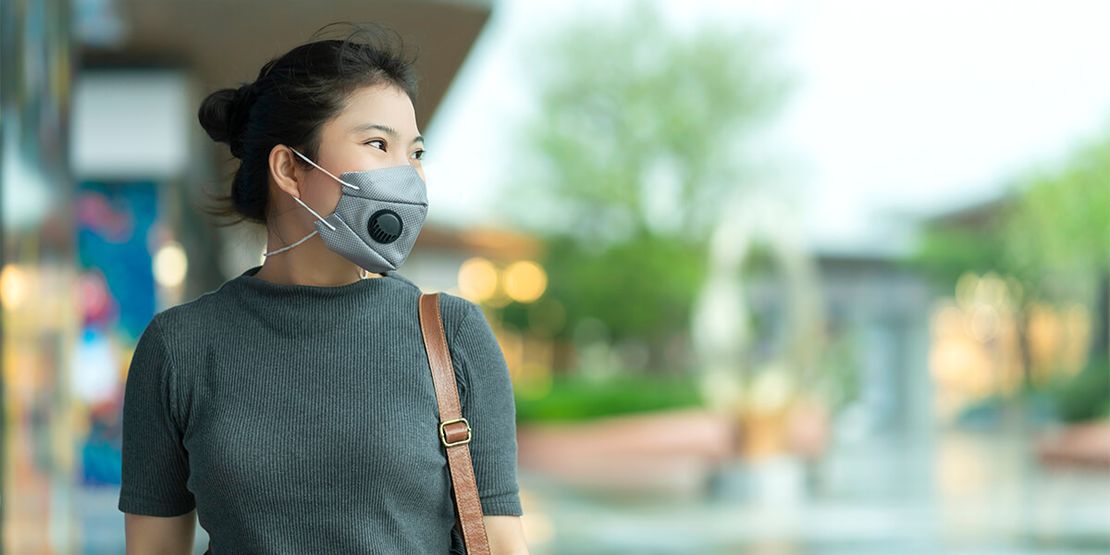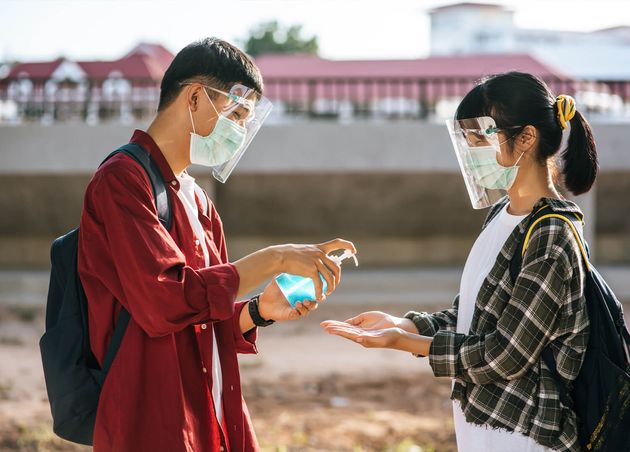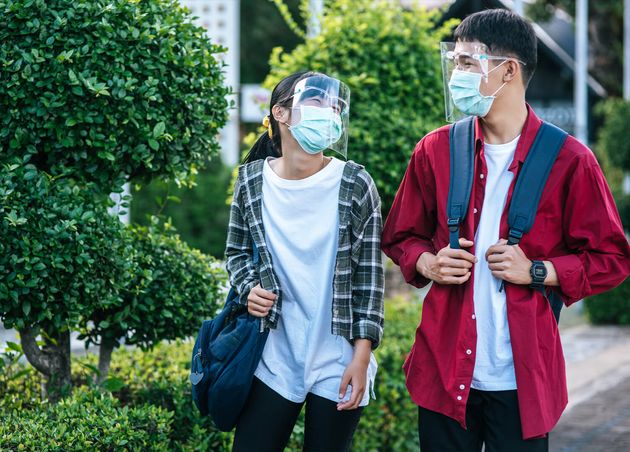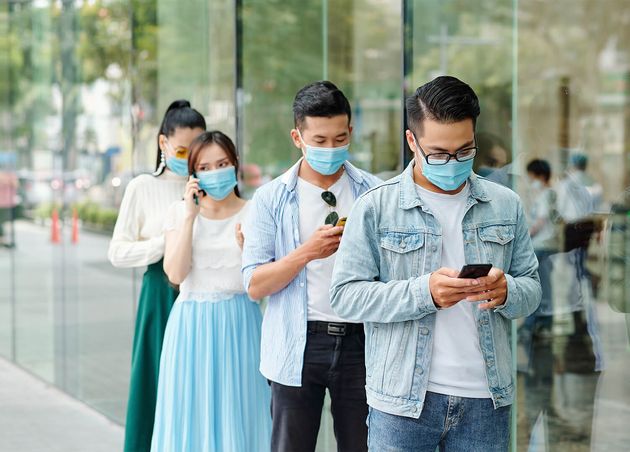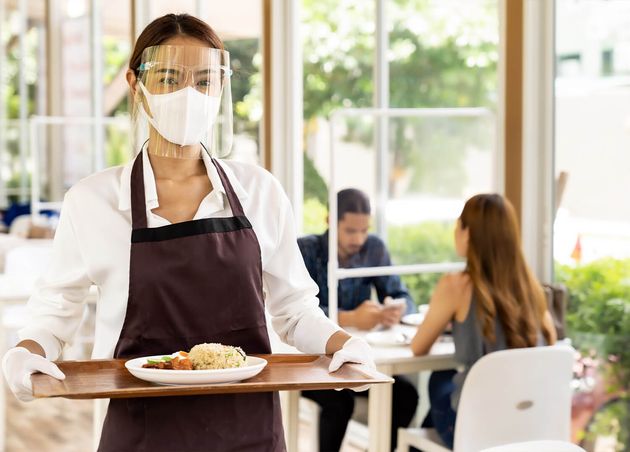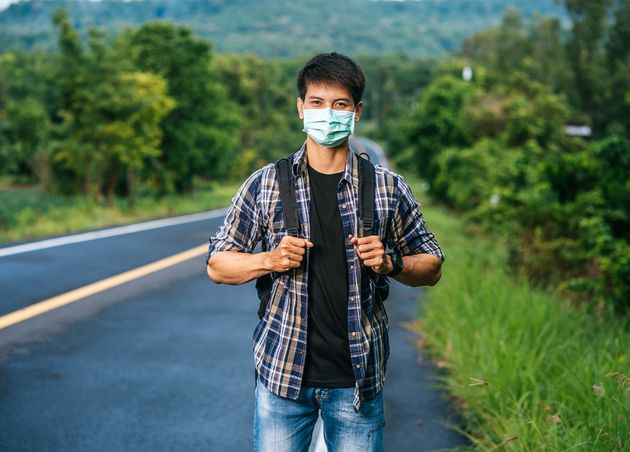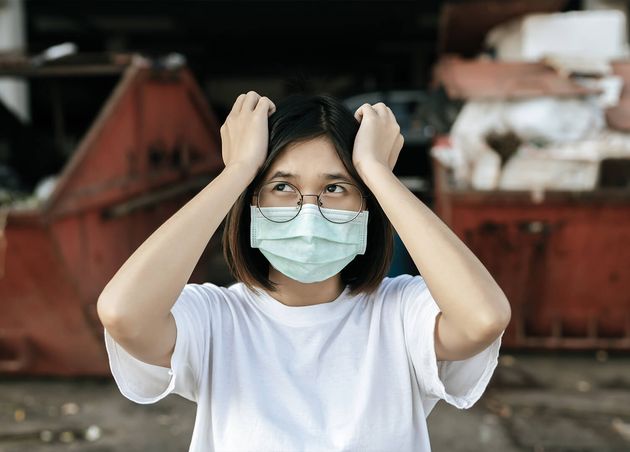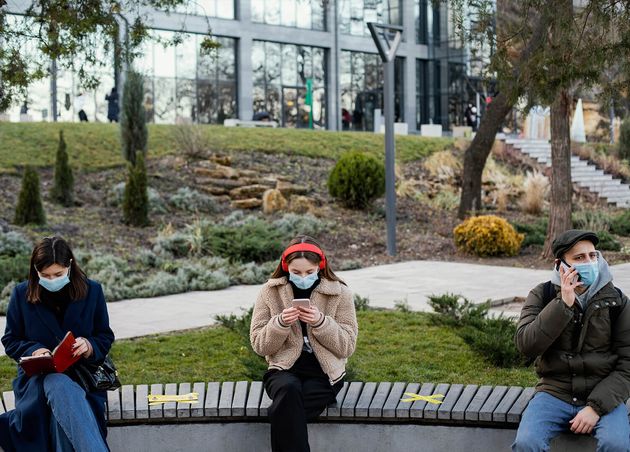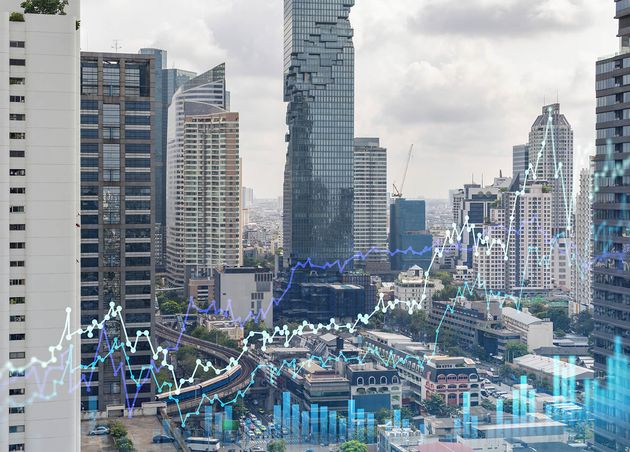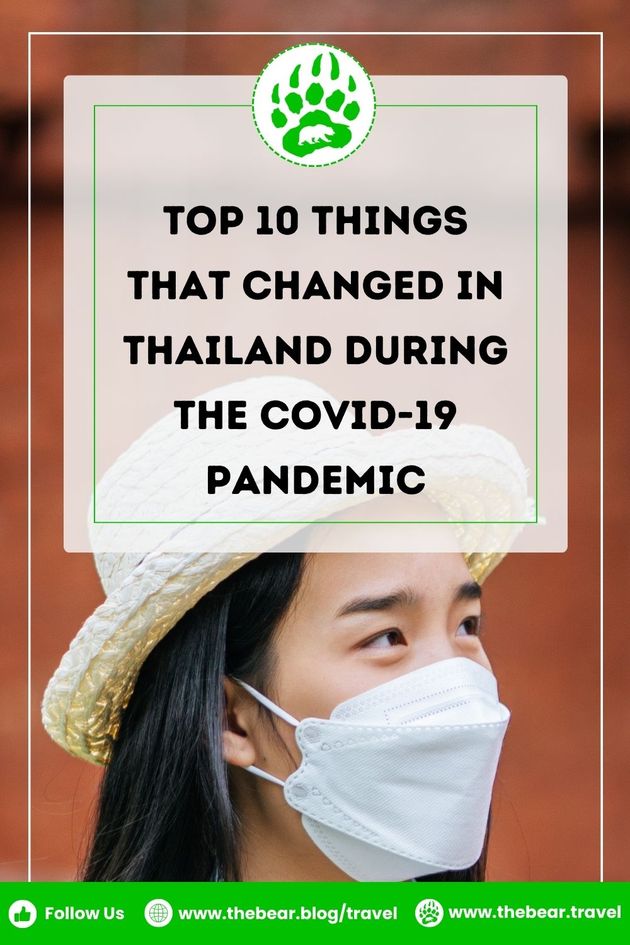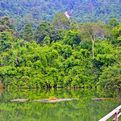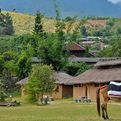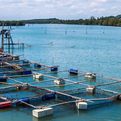Top 10 Things that Changed in Thailand After the Pandemic
The COVID-19 pandemic has turned the world upside down. Everything from how we live and interact with each other, work and communicate, and move around and travel has been affected in one way or another.
Although Thailand has reopened for foreigners and locals as the lockdown has been lifted, we probably won't return to our old traditional patterns any sooner, even though the pandemic has ended and the situation is improving.
Here are the top 10 lasting changes in Thailand after the COVID-19 pandemic.
#10 Online Shopping and Robot Deliveries in Thailand
In Thailand, the COVID-19 pandemic has changed how we purchase things. We've been shopping less overall, with a considerable population staying home and most market-driven stores being shut down. But now, online shopping is on the rise. Large shopping malls won't disappear, but they'll change. We don't see the usual crowd anymore, and physical stores might become a place where you see samples of products, pick up and return online. There is no more need for giant supercenters, but stores might be smaller.
However, they'll still matter, even to retailers that started online. Payments will also be contactless; even when the pandemic has ended, many of us still don't want to touch keypads and deal with money. Therefore, sellers have devoted contactless options. This trend has already begun because the pandemic has accelerated it. Just like the previous SARS outbreak led to a vast improvement of business-to-business and business-to-consumer online marketplace platforms worldwide.
Likewise, COVID-19 has transformed online shopping from a nice-to-have to a must-have worldwide. Online shopping is expected to benefit from a strong network. In-person delivery is not virus-proof. Thailand's shopping malls, delivery companies, and restaurants are implementing contactless delivery services. This entails collecting and dropping items off at a specified location rather than directly exchanging hands with a person.
Thai e-commerce giants are furthermore ramping up their advancement of robot deliveries. Most customers intended their purchases to reduce time and care about personal health security, contactless activities, and minimum interactions with people in the stores.
#9 Key Trends in Healthcare in Thailand
The use of virtual doctors has increased with the beginning of the pandemic. In Thailand, telemedicine will become a motivation for the totality of digital healthcare and the telemedicine industry, as self-isolating medical practitioners and patients have used mobile and online apps to attend to patients.
The Thai markets have the most significant potential for telemedicine growth due to low access to medical services. However, this transformation will require new ways of working for a broad set of providers, data exchange modifications, and expanding technology entry and integration. The influence will be evident with satisfaction, complimentary access to healthcare, and improved patient outcomes.
#8 Changes in Thai education
The COVID-19 pandemic has significantly influenced every aspect of Thailand, one of which is education. Now that COVID-19 is under control, schools reopened with preventive measures. Demand for blended learning of in-person lessons and distance learning has boosted education startups. Universities now offer more courses and programs for skills, upskilling, and reskilling. Students' interest has shifted to new disciplines, prompting universities to revise and redesign their programs.
University students and new graduates will play a significant role in community development, leading to local startups and social enterprises. In addition, startups are motivated to create inventions to support new typical education, such as screening, tracing, and tracking systems for schools, innovative educational media to replace classroom learning or enhance hands-on training, the infrastructure supporting distance learning such as high-speed internet in schools or community learning centers, and central platform storing education content for easy access.
Due to the COVID-19 pandemic, many educational institutions in Thailand have experienced prolonged closures. However, the new semester started with the word "Vaccine." The health authorities vaccinated more than 4.5 million children between 12 and 17. In addition, educational institutes were grouped according to the stringency of the transmission in their respective provinces, from green to yellow, orange, red, and dark red. Each category entailed different COVID-19 control measures.
These included the requirement for educational institutes to evaluate their willingness for on-site education based on strategies given by the Health Department and to carry out learning activities in small groups. Children in high-risk zones such as Krung Thep Maha Nakhon (Bangkok) must conduct COVID-19 rapid antigen tests once or twice weekly. They were also required to issue a school pass for every student, teacher, and educational staff for screening and monitoring purposes.
However, as the pandemic emergency was lifted, educational institutes became operational with new changes to the curricular system.
#7 Physical Activities of People
There is no doubt that the COVID-19 pandemic adversely influenced the Thai population. Physical activities peaked at the early stage of the COVID-19 pandemic. They then began a decline as the government imposed several measures to contain the virus by restricting people's movement in society. Schools, offices, and public facilities were closed to encourage people to stay home from the first infection.
The fear of infection also motivated Thais to self-isolate by working from home and replacing face-to-face interactions with online socializing or teleconferencing. As a result, the total number of activities for work-related and transportation purposes decreased because most office work was performed at home. The closure of public parks, gyms, and other sports facilities similarly decreased the chance for Thais to engage in their ordinary recreational activities outside the home.
I feel that familiar emotional feedback to a pandemic is an unbelievable feeling of fear or anxiety. Therefore, convincing people that they need to engage in more physical activities was hard, according to the situation in Thailand. Accordingly, it may take months or years for people to let their guard down and resume their pre-COVID-19 routine.
#6 Work from Home
In a year characterized by Zoom meetings, opportunistic mask sales, and virtual yoga classes, perhaps no phenomenon stemming from the COVID-19 pandemic will have a more enduring impact than the paradigm shift toward remote work. Across the globe, the pandemic compelled companies to close down their physical offices.
By June 2019, a substantial portion of Thailand's workforce, particularly white-collar professionals, had transitioned to working from home, often opting to retreat to more affordable or tranquil settings outside their urban apartments. This trend echoed globally, creating a reprieve from the typical stresses of daily life. Traffic congestion has vanished in cities like Krung Thep Maha Nakhon (Bangkok), Chaing Mai, Phuket, and Pattaya. Companies reported substantial savings on utility bills and operational expenses, prompting a reevaluation of the necessity of expensive office spaces.
Two years later, it's becoming increasingly conceivable that the office work concept may be forever transformed. For many, remote work now symbolizes a higher level of employment. However, this shift hasn't come without drawbacks. With physical offices closed, many employees, including those working in canteens, lunch-hour restaurants, janitorial services, and other supporting roles, have experienced job losses as an unintended outcome of remote work.
Despite these challenges, most remote employees indicate that, once the pandemic subsides, they will seek a greater say in their work environment. This preference revolves around a flexible blend of remote work and office presence. This shift represents a substantial change that companies must grapple with for years.
While businesses will save millions on utility bills and office rent, embracing permanent remote work isn't without its downsides. The loss of in-person interactions can impede productivity, particularly for those at the outset of their careers who have struggled to adapt to remote setups. The research underscores the importance of face-to-face contact in fostering innovative ideas.
As we navigate this new landscape, companies must carefully balance the benefits of remote work with its potential pitfalls. The legacy of this shift will likely reverberate across professional realms for years to come.
#5 Change of Appetite
As the virus rapidly spread worldwide, an intriguing trend emerged in Thailand: the uniform response of people regarding food. The closure of restaurants and hotels was widespread, causing the disappearance of high-end delicacies. Simultaneously, many individuals began stockpiling basic food items such as yams and other staples.
The shift was palpable: individuals who had once heavily relied on takeout and dining out swiftly transitioned to preparing meals at home almost exclusively. They turned to economical comfort foods that offered both sustenance and a sense of familiarity. These behavioral changes were often driven by concerns of potential food shortages and the hoarding of supplies due to the uncertainty of the COVID-19 pandemic. While these fears were largely short-lived regarding actual food scarcity, they did have a lasting impact on eating habits. Within approximately two years, a notable transformation occurred in how people approach food consumption, which seems likely to persist in the long term.
One significant shift involves a heightened global sense of food insecurity. The pandemic's economic repercussions exacerbated disparities between those who can easily access and afford nutritious food and those who face barriers. In contrast, there has been a shift away from processed comfort foods among those with the means to make such choices, with a growing emphasis on healthy eating practices. This evolving food landscape underscores how the pandemic has reshaped our daily routines and our fundamental relationship with food.
#4 Nature
The truth is that it takes the COVID-19 pandemic to get us to enjoy our backyard. In 2019, a year in which the coronavirus ruined international travel and brought terms like “quarantine” and “social distancing” into the vocabulary, millions of Thais turned to the great outdoors for refuge.
Despite a nominal 28% decrease in nationwide visitation, as the National Park Service reported, parks and public lands saw a surge in crowds. This apparent discrepancy can actually be attributed to the impact of pandemic-related closures and restrictions on overall visitation numbers. The decline does not indicate the increase in guests observed in parks that remained accessible during this time. As movie theaters, restaurants, bars, and stores were closed across the country, parks had emerged as the one safe space for scratching the desire to get out of the house.
Thailand’s renewed relationship with nature during times of disaster is not entirely a new phenomenon. The trend matches how the country has reacted to the severe pandemic. The other side of the coin is nature is refreshed during the pandemic. There were no more crowds, no more waste, and the environment enjoying its freedom. In addition, people could learn about the value of nature during the pandemic. So, we hope that they will protect the environment with this lesson.
#3 Anxiety and Depression
The pandemic has significantly and profoundly changed Thai individuals' mental well-being. Anxiety, depression, and even thoughts of suicide have surged amidst the pandemic. While the exact causes behind this escalation in mental health issues remain complex and not fully elucidated by studies, various factors linked to the pandemic have contributed to this distressing trend.
Among these factors are circumstances such as separation from family members, enforced social isolation, closures of educational institutions, job losses, financial concerns, and the looming threat of the disease itself. The toll on the mental health of young adults in Thailand has been particularly pronounced. The closure of universities, loss of income, and other pandemic-related consequences have taken a toll on this demographic, with a notable increase in symptoms associated with anxiety and depressive disorders. This group also reported instances of substance use and thoughts of suicide at a higher rate than other adults.
Even before the pandemic, young adults were already at heightened risk for mental health challenges and substance use disorders. However, many individuals within this group did not receive the necessary treatment. Historical data from previous economic downturns emphasizes how job losses can precipitate a rise in depression, anxiety, distress, and diminished self-esteem, ultimately contributing to increased substance use disorders and suicide rates. Within the context of the pandemic, Thai adults residing in households facing job losses or reduced incomes have reported experiencing a higher prevalence of symptoms indicative of mental illness compared to those who haven't faced such economic hardships.
Additionally, research conducted during the pandemic highlights the concerns surrounding the mental well-being of children and their parents, particularly mothers. The closure of schools and the lack of available childcare have posed considerable challenges, leading to elevated stress levels among mothers. Furthermore, women with children are more likely to exhibit symptoms of anxiety and depressive disorders compared to men. This gender disparity, reflective of pre-pandemic trends, underscores that women generally have consistently reported higher levels of anxiety and even depression compared to their male counterparts.
The pandemic has thus amplified existing vulnerabilities, casting a spotlight on the necessity for comprehensive mental health support, particularly for those who are disproportionately impacted.
#2 New Vocabulary
Several new words and phrases entered the general dictionary in 2020. Although those words were new, the educated and non-educators in Thailand began to use them without distinctiveness.
We were told we needed to "social distance" or stay six feet apart to "flatten the curve" or slow the disease's spread to reduce the burden on the healthcare system. People even became familiar with new terms undertaken with 'corona' to 'vaccination.
Certainly, the term "COVID-19" is a recent designation by the World Health Organization (WHO) to refer to the disease caused by the novel coronavirus. All Thai students and people who can or can't write will indeed write the new terms as they are familiar with them so closely now.
#1 Economy
Like many nations, Thailand's economy has been severely affected by the COVID-19 pandemic over the past two years. The country witnessed a contraction of over 6 percent in its GDP during 2020, particularly affecting workers in the tourism sector who faced job losses. While a growth rate of 2.6 percent was anticipated for 2021, the resurgence of COVID-19 cases within Thailand and the region emphasized the ongoing uncertainty surrounding the pandemic's trajectory. This highlighted the necessity of continuous efforts to control the virus's spread for a resilient and robust recovery.
The pandemic abruptly halted tourism activities and led to a significant reduction in economic output. Thailand experienced a substantial GDP contraction of 6.1 percent in 2020, marking the most substantial decline since the Asian financial crisis. The tourism industry, constituting approximately a fifth of GDP and 20 percent of employment, bore the brunt of the impact due to the travel suspension. The repercussions of pandemic-related closures disproportionately affected low-skilled, informal, and migrant workers, particularly among women and the youth. These segments faced reduced employment prospects, and the adverse consequences of these layoffs were evident in 2020.
While the financial sector exhibited relative resilience during this period, challenges were mounting for small and medium-sized businesses. With the future uncertain, strategies to build a more resilient and stronger economy are anticipated. In this context, Thailand took steps to include tourism workers as essential individuals in the vaccination priority list, aiming to facilitate a secure reopening of the tourism sector. The country sought to welcome international tourists through initiatives enabling the movement of fully vaccinated travelers.
The COVID-19 crisis also provided some opportunities to align recovery policies with climate goals, enhancing economic stability and resilience while addressing climate change. Implementing efficient carbon pricing mechanisms could drive the transition towards cleaner energy options, reduce emissions and air pollution, and support the transition to a low-carbon economy.
As Thailand navigates this challenging period, it emphasizes the importance of reimagining its future and embracing change as both a challenge and an opportunity for survival. This approach is intended to safeguard its people's health, livelihoods, food security, and nutrition, ensuring that the "new normal" is improved. Thus, embracing these changes and viewing life as a blessing is the best action.
Rowan (Guinness Bear)
Hi! I'm Rowan Travers (Guinness Bear), your go-to travel companion, always on the move to uncover the most breathtaking destinations. Join me as I share my recommendations for must-visit spots and memorable experiences. Dive into my immersive "Top 10" series, and let's explore the world together!
The Bear Travel | Experience like a Local
A fast-growing Thailand Travel Blog written by Expats and Thais since 2017. We will share our experiences and ideas from an insider point of view for you to create your own unique Thailand experience.
For the latest news and events about The Bear Travel, follow us on Facebook, Instagram, Twitter, Pinterest, or YouTube.
For any issues, concerns, or queries, don’t hesitate to CONTACT us.
Recommended for you
Travel to Chanthaburi Guide: Everything You Need to Know
The Bear Team
Travel to Pai Guide: Everything You Need to Know
Dr. Theodore (Professor Bear)
Shrimp Farming in Thailand: Exploring Only the Best Places
Riley Sinclair (Digital Aqua Bear)
The Coffee Club Bangkok: Explore Your Happy Place Here!
Tle (Hungry Bear)
Thailand Travel Precautions: Recognizing Diseases and Animal Risks
Dr. Theodore (Professor Bear)


